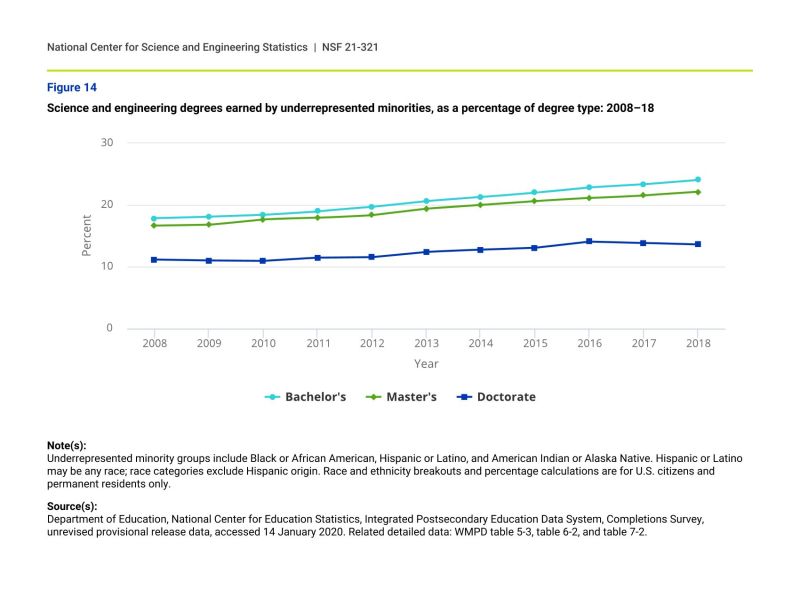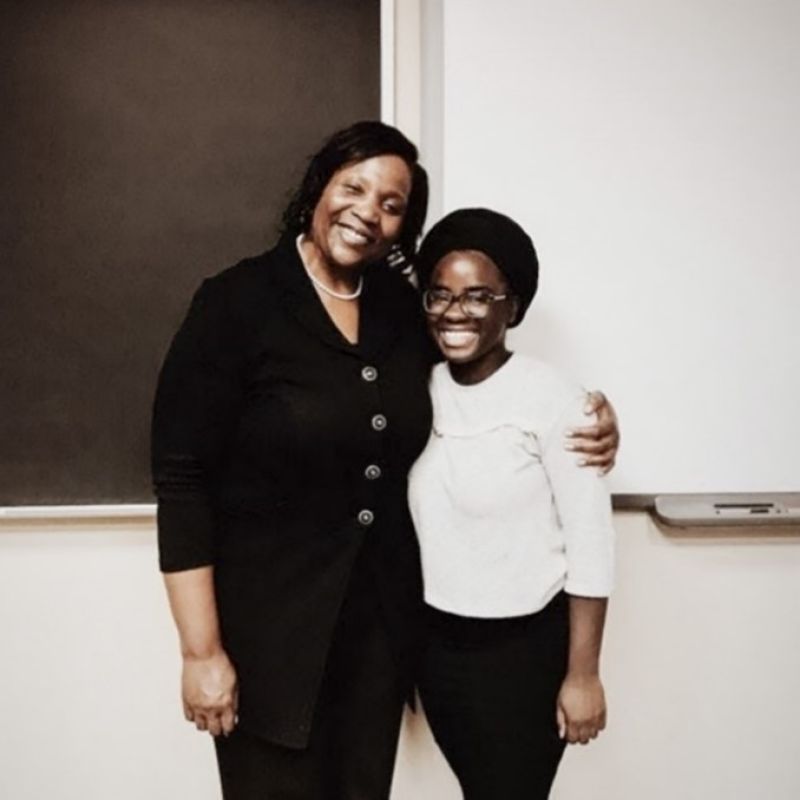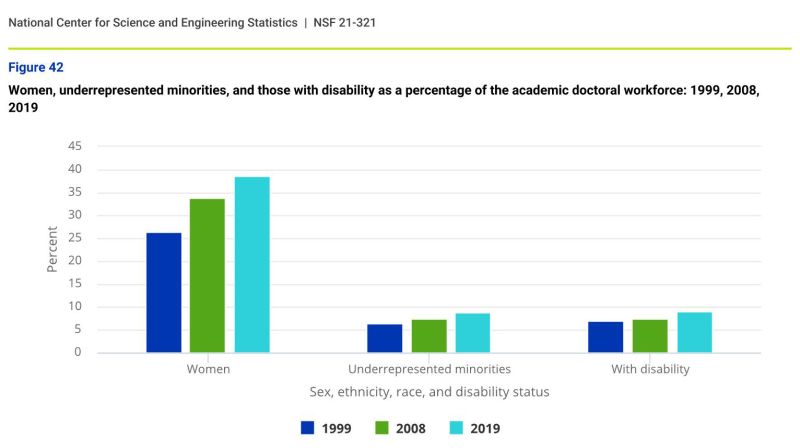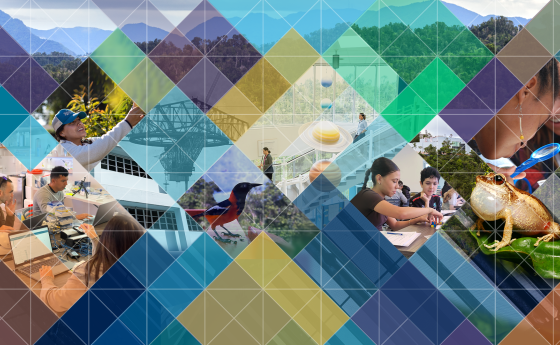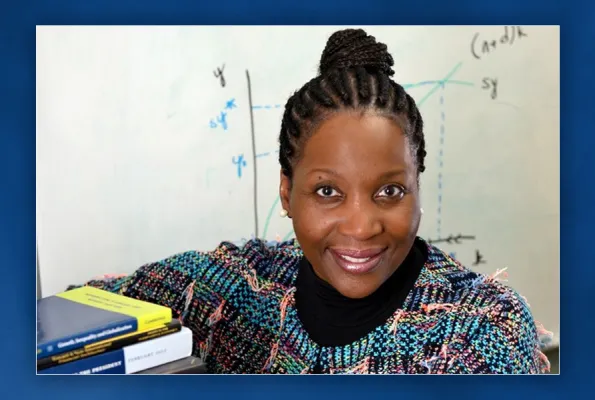
Moving the needle: Lisa D. Cook on maximizing U.S. innovation through broader participation
A conversation with economics researcher Lisa D. Cook about the 2021 Women, Minorities and Persons with Disabilities in Science and Engineering report and what it means for inventors, the innovation economy and the future of American-made ideas.
Whether you’re rejoicing with a loved one whose cancer is in remission or just binge-watching another superhero show on your TV, you’re reaping the benefits of inventions: the transistor, the internet, advanced medical treatments and more. Now imagine what our lives would be like if countless American-made inventions were never actually invented. Or, if another country invented them instead.
Such questions are not necessarily hypothetical. The national impact of scientific innovations — including those that never came to be — is a focus for economics researcher Lisa D. Cook. She probes the large-scale effects of underrepresentation in the U.S. innovation economy, from universities and laboratories to venture capital firms. Among her many publications is a groundbreaking 2014 study in which she uncovered the devasting consequences of racial violence in the U.S. on Black inventors seeking patents. Her 10-year quest to publish that study, overcoming opposition within her own field, was the subject of the NPR radio segment “Patent Racism.”
Since the early 1980s, NSF’s National Center for Science and Engineering Statistics has published over 20 editions of the Women, Minorities and Persons with Disabilities in Science and Engineering report, providing the best available statistics on the participation and inclusion of those three groups.
With the newly released 2021 report in hand, I asked Cook some questions about the story that data tells and what it might mean for the future of American-made ideas.
As an expert in the conditions that promote economic growth, can you explain what innovation and ideas have to do with the economy and why this report’s data is relevant to our national growth?
Economists used to believe that we couldn’t change the rate at which countries grow in the long run except through, say, population growth. But there is this other variable. Let’s call it innovation.
Increasing the arrival rate of new ideas is fundamental to a country’s economic growth. Understanding that relationship is at the center of Paul Romer’s 2018 Nobel Prize in economics. We want to know who's participating in innovation in the U.S. and where it is going to come from in the future.
Among other things, I’m very interested in gender and racial gaps at each of the three stages of the innovation process. The first stage is education, which is informed by enrollment data in science and engineering fields. The second is training, including occupations and employment. The third stage is commercialization. For education and occupations, I use this report’s data on people with science and engineering degrees.
I was one of the first people in my field to be concerned about the racial, ethnic and gender gaps in the invention process in the U.S. Earlier in my career, I was told that I would not get tenure if I studied women inventors and Black inventors. I was told that nobody cares. But I guess I think a bit differently, and I started to understand that there is a hole in the scientific literature on technological innovation. Not just something missing — a hole. Women alone are about one-third of all inventors. And we don't need to worry about them? I think we do. I absolutely think we do.
How best to foster greater participation in science and technology innovation is one of the most urgent questions we have.
What is striking to you about this edition of the Women, Minorities, and Persons with Disabilities in Science and Engineering report?
The things I take note of first are the changes in enrollment and median salary. For example, the median salary for women working in the innovation economy in 2010 was 66% of the median male salary. By 2019, it was 74%. We see movement, and this is heartening.
On the other hand, the salary gap for African Americans working in STEM was largely unchanged. The median salary for African Americans was 78% of whites in 2010 and 79% in 2019.
I’d obviously like to know more about that. I’d like to know what’s causing it. I always want to know more because I want more ideas coming into our economy.
I was delighted to see data on graduate participation in science and engineering fields reported about Black women and other women by race or ethnicity. Often, data are reported by race or ethnicity but not race, ethnicity and gender. To understand participation in the innovation economy, we must understand how each group is faring and therefore what changes might be needed.
What does your research and the data you’ve studied reveal about the potential economic payoff of broadening participation in science and engineering? How might the U.S. benefit from greater inclusivity in the innovation process?
We can answer that question in two ways. On the one hand, we’d like to generate more ideas, and the innovation economy is where you can do that. We'd like to attract as many people as possible to those occupations, and that could affect the gross domestic product and overall productive capacity of the U.S.
Secondly, the largest racial wealth gap in the innovation process is at the commercialization stage. That's where you see tremendous wealth being created by founders of various tech firms. Typically, about seven of the 10 wealthiest people in the world are wealthy because of their contributions to the tech field and to the innovation economy. But only 1% of venture capital funding for commercializing new innovations goes to African Americans. Around 5% goes to women and 0.2% goes to Black women.
If we're looking at inequality by gender and race, this is significant.
Innovation can change the trajectory of growth for any country. This is based on the aforementioned work of Paul Romer, my professor at the University of California, Berkley. You’ve got to figure out a way to escape the trap of declining growth that most countries experience once they become industrialized.
If a country can increase the rate of arrival of ideas, then they can increase their productive capacity. They can push out to the technological frontiers. That makes everybody better off because it's not just about GDP per capita, it’s about living standards. We'd like to see living standards always growing because it’s part of the social compact people have with their governments: that every succeeding generation will see higher and higher standards of living.
What changes have you observed in the participation of women and minorities in science and engineering over the course of your career?
I saw women and African Americans getting more education in fields like biology, especially in the 1990s, along with an explosion in the number of biotech firms and biotech patents. But we did not see participation by women and African Americans in those firms and patents growing in tandem. This is what continues to surprise me. Women and underrepresented minorities have increased their knowledge and have participated more at the beginning of the innovation process through education, but we don't see them participating in the later stages of employment and commercialization.
I’m also looking at educational enrollment at the bachelors, masters and doctoral levels for women and African Americans and where they’re declining, not just where they’re increasing. In my field of economics, we see stagnation for African Americans and recent stagnation for women. It’s interesting but jarring to see this when it happens. The same is true for computer science, especially for women and African Americans.
There are many interventions that have been devised to augment and support participation but sometimes you just see it plateauing and you want to figure out why. Why is this not growing? How is this different?
The report illustrates data and trends on a huge scale, involving hundreds of thousands of individuals. As a mentor and educator, what advice would you give to your fellow researchers who want to somehow move these big numbers and trends in a positive direction?
I'm going to give you an answer and then I'm going to completely object to that answer. (Laughs.)
I think mentoring is critical. Anybody can be a mentor and everybody has something to offer. A lot of people who are quite talented intellectually don't get exposed to inventors. Or they don't get into the classes or don’t go to the institutions of higher learning that would challenge them. And the question is “Why?”
Sometimes we're too hands off. We sometimes assume that everybody has the same information about opportunities and career advancement, but women and underrepresented minorities typically get that information much later in their undergraduate years. We need to provide research opportunities earlier.
At the same time, I am very aware that the highest unemployment rate in science and engineering occupations is among African Americans and African American women, in particular. That means there are people trained and available to do science and engineering jobs, but they're not being hired.
It's not just mentorship and the STEM education pipeline where we need to pay attention. From the person on the lowest rung in the innovation economy to company founders who can't get venture capital funding, there's a lot to be done. Interventions at all stages of the innovation process have to be pursued.
What role do you see innovation and ideas playing in the economic and technological competitiveness of the U.S. going forward?
The free flow of ideas is ultimately what will help to increase the rate of arrival of new ideas. If you have impediments to the free flow of ideas — like racism and sexism — then you’re not going to increase productive capacity as much as you could otherwise.
I have begun to increasingly study the methods that I think are effective. This is just part of my thinking about economic growth and about raising living standards, but it is also thinking about what moves the needle and what makes a country competitive with respect to ideas.
There's a race for new ideas. Our country wouldn't be spied on so much if we weren’t good at producing ideas! But we've got to continue to be better at it. The only way we're going to increase our productive capacity is to erode these frictions that disallow the free flow of ideas.

